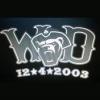Forged vs Cast
-
Who's Online 75 Members, 0 Anonymous, 822 Guests (See full list)
- alexchung
- USMCSnyper
- Mike Palma
- Indy_Oz
- Parshooter36
- Bubba1985
- Javs
- ronnieg
- Shamrok_17
- golftoomuch
- GaryF
- Fourputtt
- GolfSpy_BNG
- WFWP91
- GolfSpy_APH
- KC Golf
- Tom the Golf Nut
- Rob_C
- itsteetime
- Schnurrbart
- zstokes
- Schildgen
- ZackS
- ToastedSoul
- Chobe
- Dan Yates
- PrismFlopper
- Golf2Much
- William P
- azstu324
- skraeling
- sl1111
- Joppers11
- orinjb24
- GolfSpy MPR
- TaylormadeHunter1
- Fool4vokey
- JoeGolfingPgh
- MissionMan
- barney_bogey
- dbergie
- Corrie
- Preeway
- RogerJR
- blopoten
- Big moose
- SilverGolfer
- Jmikecpa
- ncan23
- Alf. S
- dns5010
- Alan Scalzi
- colin0002
- ChaosReigns
- berkeleybob
- Cal319
- EmC4757
- Kyle Cozza
- West MI golfer
- blsub
- Grip
- WLambert
- Skibum
- MajorCavalry
- EEZurg
- Kevin Schmuckal
- Josh Parker
- Howdy35
- MikeyGM52
- LeakyValve
- Martien
- Cjf07960
- TrevG
- Andy Williamson
- Ron Ewing


Recommended Posts
Archived
This topic is now archived and is closed to further replies.